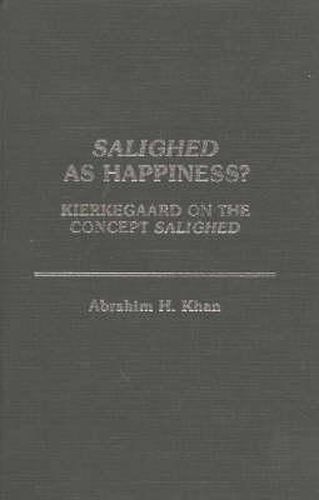Readings Newsletter
Become a Readings Member to make your shopping experience even easier.
Sign in or sign up for free!
You’re not far away from qualifying for FREE standard shipping within Australia
You’ve qualified for FREE standard shipping within Australia
The cart is loading…






This work is an exposition of Salighed, a concept at the heart of Kierkegaard’s thought, and the dialectical starting point for his reflections on what it means to live a genuinely human life. Kierkegaard studies to date appear to have underestimated the importance of the word and the concepts that lie behind itaperhaps because the word appears easily translated into the English forms of eternal happiness or blessedness. This, suggests Khan, does little justice to the concepts behind the word, and does even less justice to the relationships of the concept of Salighed to other concepts crucial to Kierkegaard’s thought. Khan’s approach to this word/concept study has been greatly augmented by his use of the computer in analyzing word-relatedness, context, and frequency of occurrence, both within individual works and in comparing one work with a context of the Kierkegaard corpus. The volume will, of course, be of interest to students of Kierkegaard. It will also be of interest to those scholars intrigued by the possibilities of using computers in linguistic research and in literary studies.
$9.00 standard shipping within Australia
FREE standard shipping within Australia for orders over $100.00
Express & International shipping calculated at checkout
This work is an exposition of Salighed, a concept at the heart of Kierkegaard’s thought, and the dialectical starting point for his reflections on what it means to live a genuinely human life. Kierkegaard studies to date appear to have underestimated the importance of the word and the concepts that lie behind itaperhaps because the word appears easily translated into the English forms of eternal happiness or blessedness. This, suggests Khan, does little justice to the concepts behind the word, and does even less justice to the relationships of the concept of Salighed to other concepts crucial to Kierkegaard’s thought. Khan’s approach to this word/concept study has been greatly augmented by his use of the computer in analyzing word-relatedness, context, and frequency of occurrence, both within individual works and in comparing one work with a context of the Kierkegaard corpus. The volume will, of course, be of interest to students of Kierkegaard. It will also be of interest to those scholars intrigued by the possibilities of using computers in linguistic research and in literary studies.